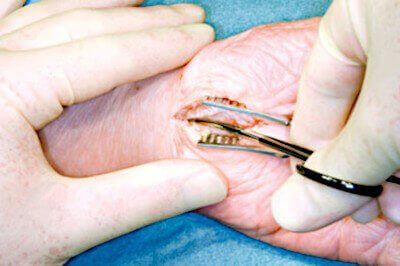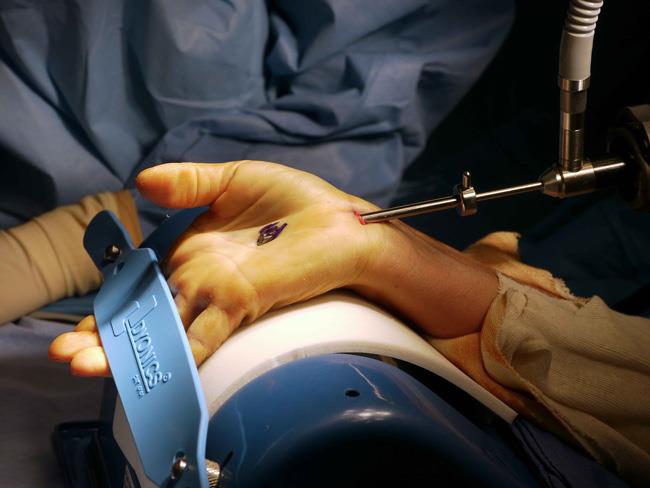This procedure is termed “open” because the surgeon cuts into your palm more broadly. The skin on the palm is spread apart which "opens" the entire area without restricting view of vital structures. This way the surgeon can cut the transverse carpal ligament without danger of accidentally cutting or nicking something else.
Most doctors say the open technique is the safest method. And it's why most surgeons prefer using it.
Open carpal tunnel release surgery can be performed on an outpatient basis. The entire procedure takes 30-45 minutes.
STEP 1
Usually doctors prefer to put the patient under general anesthesia for the open technique. Sometimes the doctor will also inject a numbing agent into the wrist before beginning. Sometimes a median nerve block is used. These will help ease the pain when you wake up. But you will be asleep during the operation.
STEP 2
The nurse or doctor will wrap a tourniquet around your arm. This lessens bleeding as your palm is cut open.
STEP 3
When you're asleep the nurse or surgeon disinfects your hand, wrist, and forearm. Then the doctor makes a 2-3 inch-long incision at the base of your palm. Some surgeons prefer using a "mini-cut". This is about half as long as a standard incision. It helps minimize scar tenderness after the operation.
STEP 4
With your palm's skin and underlying tissues open, the doctor identifies the ligament and cuts it in half. When it's cut, your wrist bones spread apart, providing more room inside the wrist joint. This relieves pressure on the median nerve.
STEP 5
The doctor closes the incision in your palm with non-resorbable sutures. That means you have to return to the doctor in 7-10 days to remove them. Then the doctor applies several layers of bandages to your hand.
STEP 6
You are brought out of the anesthesia's induced sleep. Then you're wheeled into the recovery room. You'll stay there 2-4 hours to make sure your vital signs are stable. Then you can go home.











